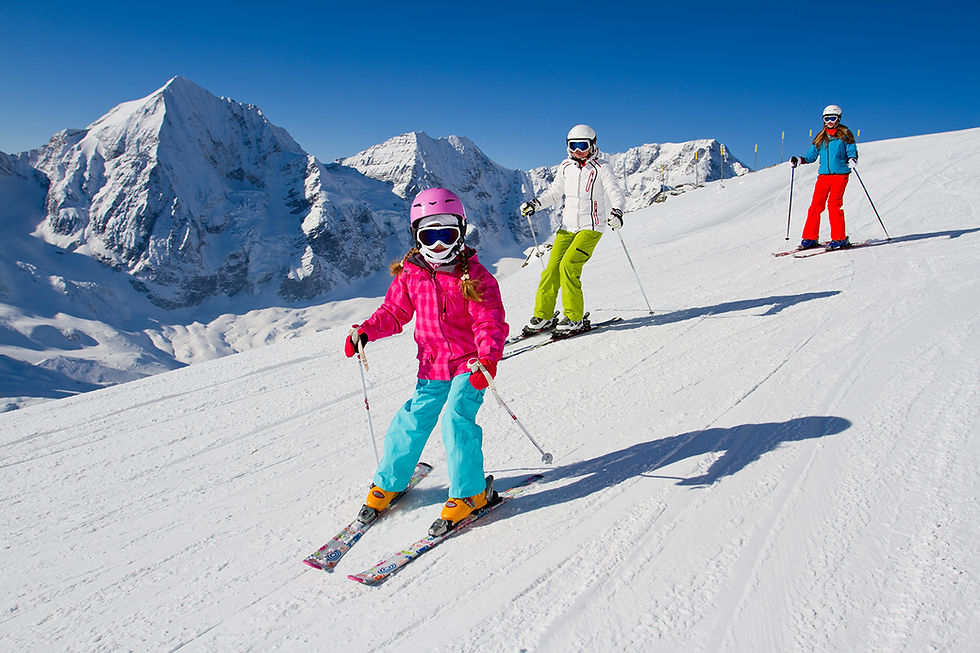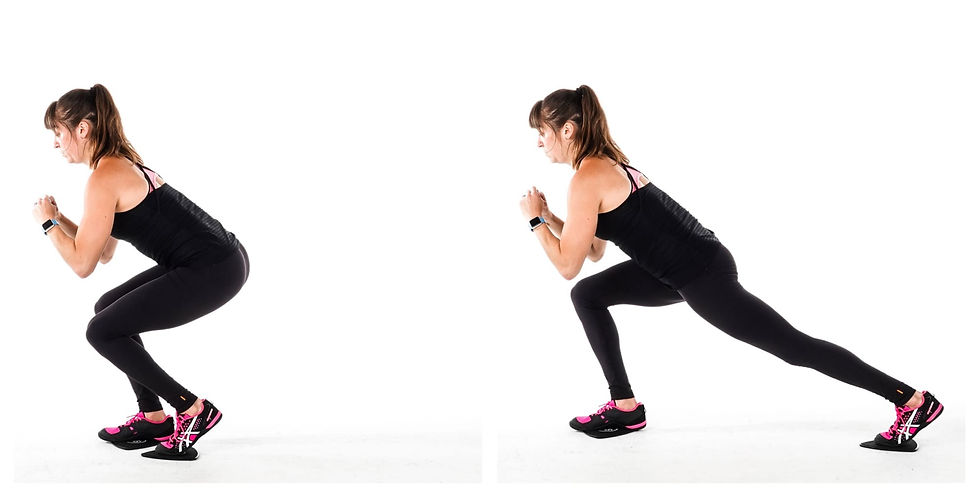Avoid Injury on the Slopes this Winter
- Team LASP

- Jun 10, 2022
- 3 min read
Two years of delayed snow travel, the last thing anyone wants is to get injured on the first slope!

Our bodies are fit and strong to the type of forces and activities we are consistently exposed to.
Most of us only ski a few times a year, so we risk not having enough consistent exposure to the forces our joints, ligaments and muscles are going to be exposed to in the snow!
This is a significant risk factor for injury!
Strength and conditioning your body before your getaway will be important for ensuring you and your family can enjoy your time in the snow, injury-free.
Whether you're skiing, snowboarding or ice skating, there are key lower body and core muscle groups to target to ensure your body is well-equipped to handle the slopes.

An Important Thing to Remember!
General cardio-respiratory fitness through running, walking, or swimming is also very helpful for the demands of snow activity. Dynamic strength exercises can help to mimic some of the forces and movements needed to survive a fun day on the slopes and feel good.
So to avoid injury, soreness or misery on your snow holiday, take some time to prepare your body by improving your cardio fitness, as well as strengthening your lower body and core muscles and overall coordination.
The program that works for you will in part depend on your current level of fitness, strength and any previous injury history you may need to be considerate of - a minimum of 6 weeks is a good guide to aim for.
Our team of physiotherapists can help you with any injury concerns you may have along with some exercise guidance. For a performance edge, or for more specific exercise programming, our team of Exercise Physiologists can tailor a program for you.

Below are two example exercises that can be incorporated into an overall exercise program that mimic some of the demands of being in the snow. A base of general lower limb strength is necessary to perform these exercises effectively.
Note: Always make sure to warm up before performing these exercises with cycling, brisk walking or an easy jog to get the body moving. Listen to your body and stop with fatigue, or if you experience any pain.
Exercise #1 -Squat Jumps

IMG SOURCE: https://www.popsugar.com.au/fitness/Butt-Toning-Exercises-Glutes-43121943
This beginner dynamic movement targets your lower body muscles and core, more specifically gluteals, quads and calves. Integrating this exercise into your training a few times a week will improve your ability to absorb some of the bouncing type forces you may be exposed to skiing.
How to do Squat Jumps:
Stand with feet shoulder width apart and knees slightly bent.
Bend your knees and descend into a full squat position.
Engage through quads, glutes, and hamstrings and propel the body up and off the floor, extending through the legs. With legs fully extended, the feet will be a few inches off the floor.
Descend and control your landing by going through your foot (toes, ball, arches, heel) and descend into a squat again for another explosive jump.
Upon landing immediately repeat the next jump.
Each time you do this movement, aim for higher and more explosive jumps. Start with 3 reps for 3 sets, and build according to your fitness and abilities.
Exercise #2 -Leg Slides: Backwards and Sideways

IMG SOURCE: https://redefiningstrength.com/12-slider-exercises-for-a-full-body-workout/
Strengthening your major lower body muscles, including glutes, thighs and hamstrings, this repetitive action helps stabilise your hips in motion while also building single-leg strength and control and exposure to sideways forces.
How to do Leg Slides Backwards:
Place a sliding disk under the ball of one foot.
Stand with feet shoulder width apart and knees slightly bent.
Slightly arch your body forward and shift your weight to one leg (without the sliding disk).
With the other leg, slide the foot backwards behind your body, then drag it forward again. Maintain your slight squat posture throughout the movement and keep your sliding foot touching the floor.
Repeat this sliding motion up to 10 times, then swap legs.
How to do Leg Slides Sideways
Similar to the backwards movement, place a sliding disk under the ball of one foot.
Stand with feet shoulder width apart and knees slightly bent.
Slightly arch your body forward and shift your weight to one leg (without the sliding disk).
With the other leg, slide the foot sideways away from the body, then drag it back towards start position again. Maintain your slight squat posture throughout the movement and keep your sliding foot touching the floor.
Repeat this sliding motion up to 10 times, then swap legs.

Contact Us
Our team of physiotherapists can help you with any injury concerns you may have along with some exercise guidance. For a performance edge, or for more specific exercise programming, our team of Exercise Physiologists can tailor a program for you.
Book online here
Call us at 02 4647 3373
Follow Us on Social Media!
#injuryprevention #injurymanagement #snowholiday #snowboarding #skiing #snowsports #lowerbodyexercises #exercises #coreexercises




Comments